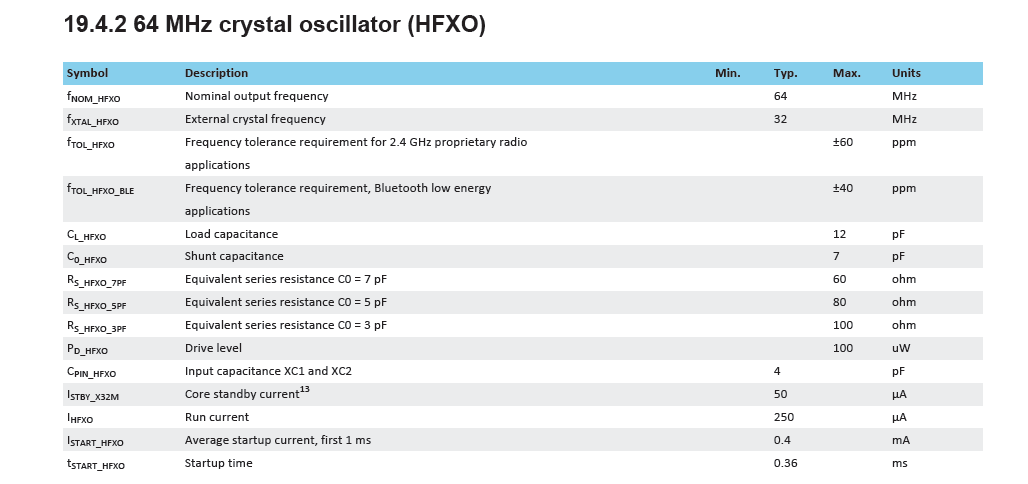Per table 19.4.2 in the nRF52 PS v 1.1:
 , what is the difference between CL (load cap) and C0 (shunt cap)? The max ESR is specified for C0 but not CL. The xtal datasheets specify CL. So how can I be sure that the ESR of the chosen xtal meets the datasheet requirements?
, what is the difference between CL (load cap) and C0 (shunt cap)? The max ESR is specified for C0 but not CL. The xtal datasheets specify CL. So how can I be sure that the ESR of the chosen xtal meets the datasheet requirements?
Will these xtals work?
AVX/Kyocera CX2016DB32000D0WZRC1
What is the physically smallest xtal that will work?


